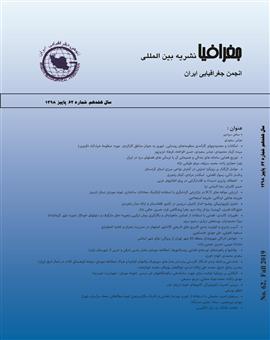امکانات و محدودیتهای کارآمدی منظومههای روستایی- شهری به عنوان مناطق کارکردی مورد: منظومة ضیاءآباد قزوین
محورهای موضوعی :سیده کیناز محمودی 1 , عباس سعيدي 2 , حسن افراخته 3 , فرهاد عزیزپور 4
1 - دانشگاه خوارزمی
2 - آلمان
3 - دانشگاه خوارزمی
4 - دانشگاه خوارزمی
کلید واژه: منظومة روستایی-شهری منطقه منطقة کارکردی توسعة یکپارچة روستایی- شهری ضیاءآباد قزوین,
چکیده مقاله :
یکی از مسایل برنامهریزی فضایی پیوسته تعیین مناطق برنامهریزی در سطوح و مقیاسهای مختلف بوده است. از این رو، در اغلب موارد حدود تقسیمات اداری، حتی بصورت ادغام چند منطقة تقسیماتی اساس قرار میگیرد. شاید بتوان گفت، مشکل اساسی در این رابطه هنگامی بروز میکند که بحث برنامهریزی سطوح خرد و پایینتر از سطح استان و شهرستان، یعنی مناطق و نواحی رسمی مطرح میگردد. مفهوم "منظومه" در سالهای اخیر به عنوان بدیلی برای این سطوح خُرد از برنامهریزی فضایی که واحد تقسیماتی "بخش" را نمایندگی میکند، مطرح شده است. پرسش اساسی در این رابطه این است که آیا تعیین محدودههای تقسیماتی که اغلب بنابر ملاحظات سیاسی صورت میپذیرد، تا چه حد با الزامات برنامهریزی انطباق دارد؟ و آیا میتوان این محدودهها را به عنوان "مناطق کارکردی" مدّ نظر قرار داد؟ در این چارچوب، این مقاله با بررسی بخش ضیاءآباد قزوین، به عنوان نمونة موردی، تلاش دارد، ضمن بررسی این مسایل، با بهرهگیری از شیوههای کیفی بحث و اتکاء به دیدگاه پویش ساختاری- کارکردی، امکانات و موانع شکلگیری مناطق کارکردی را در سطوح خُرد مورد مطالعه قرار داده، کارآمدی این سطح از عرصههای فضایی را در قالب واحدهای تقسیماتی نشان دهد. نتایج مطالعه نشان میدهد، کارآمدی منظومهها به عنوان مناطق کارکردی نه تنها در گرو تعیین اندیشیدة تقسیماتی است، بلکه اصلاح زیرساختها، سرمایهگذاریهای مرتبط و پشتیبانی موثر در تخصیص امکانات و اعتبارات، شرط تعامل متناسب و کارکردپذیری واحدهای سکونتگاهی موجود در سطح منظومهها ست.
One of the serious issues of spatial planning is to determine planning regions at different levels and on different scales. Hence, in most cases, the boundaries of administrative units or even their composition are the basis for measures. It can be argued that the fundamental problem arises when the question of planning is raised at the micro and lower levels of the provinces and districts, in the formal sub-regions and areas. The concept of the "constellation" has emerged in recent years as an alternative to these small levels of spatial planning, which represents the "district" unit. The key question in this regard is to what extent does the delimitation of the administrative divisions, which are often based on political considerations, conform to the requirements of planning? And can these units be considered as "functional regions"? In this context, this paper attempts to study these issues by considering the District Zia-Abad of Qazvin as a case study, while investigating these problems, using qualitative methods of discussion and relying on the “structural-functional dynamics” approach, to identify the opportunities and barriers to the formation of functional regions at the micro level, and the effectiveness of this level of space arena in the form of such administrative subdivisions. The results of the study show that the efficiency of constellations as functional regions depends not only on the deliberation of subdivisions, but also on the modification of infrastructure, the associated investments and effective support in the allocation of facilities and credits, the proper condition for the interaction and the functionality of existing settlements at the constellation level
